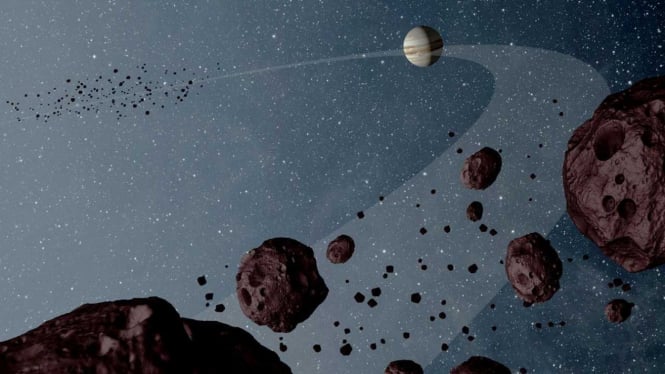Monday, 30 October 2023 – 14:01 WIB
LIVE Techno – NASA scientists successfully brought asteroid samples back to Earth in September, making them the first US space agency to do so.
The task they have to do now is to figure out how to open the Touch-and-Go Sample Acquisition Mechanism, or TAGSAM, to retrieve the remaining samples, according to NASA.
OSIRIS-REx recorded approximately seven years of travel, scanning and collecting samples from Asteroid Bennu before returning to Earth on September 24, 2023.
“Scientists hope the Bennu OSIRIS-REx sample dropped in the Utah desert will provide clues to whether the asteroid that collided with Earth billions of years ago carried water and other ingredients important for life here,” NASA wrote on their website, quoted from USA TodayMonday, October 30 2023.
Although scientists are still working to recover the remaining samples sealed in the TAGSAM head, they have been able to collect 2.48 ounces, or 70.3 grams of rock and dust from the sampling hardware. This initial collection has exceeded NASA’s goal of bringing at least 60 grams to Earth.
How do NASA scientists plan to retrieve the remaining samples?
NASA Brings 4.5 Billion Year Old Asteroid Samples to Earth
Most of the samples scientists have collected so far are located on the outside of the OSIRIS-REx sample collector head, which is accessible through the head’s mylar cover. The rest lies within TAGSAM.
A team of scientists at NASA’s Johnson Space Center in Houston tried to remove the TAGSAM head several times, but found that two of the 35 fasteners could not be removed with the tools the team was currently authorized to use.
“The TAGSAM head has more than 35 fasteners, but only 35 we plan to remove. The two that were stuck were among the last fasteners to be removed. All other fasteners were successfully removed. “We don’t know why these last two solutions stalled, but we are actively working on potential solutions while continuing to make progress in our sample processing procedures for the 70.3 grams of material extracted from TAGSAM,” according to Francis McCubbin, Curator of Astromaterials at Johnson Space Center. .
The team was able to collect some material while holding the mylar cap off the head and taking samples inside using tools such as tweezers or spoons, depending on the size of the material removed.
In the next few weeks, scientists will spend time removing all samples from the TAGSAM head using new methods, processing the recovered material, and beginning a comprehensive analysis, NASA stated on October 20.
The TAGSAM head has been removed from the nitrogen flow and stored in a special container that has been sealed with an O-ring and surrounded by a sealed Teflon bag. This was done to ensure the samples were preserved while the team considered how best to access the remaining material.
Any action performed on the samples, including with the TAGSAM head, is carried out in a special glove box with a nitrogen flow to prevent contamination from the Earth’s atmosphere. Any tools used must be compatible with this glove box and not compromise sample quality, as described by NASA.
What are NASA’s initial findings?
Preliminary analysis of asteroid samples that are around 4.5 billion years old reveals that these rocks may contain the basic elements of life on Earth. The samples showed high levels of carbon and water, according to information from NASA.
“Almost everything we do at NASA seeks to answer questions about who we are and where we come from. NASA missions like OSIRIS-REx will improve our understanding of asteroids that could threaten Earth while giving us a glimpse of what lies beyond. “The samples have made it back to Earth, but there’s still a lot of science to come – science we’ve never seen before,” NASA Administrator Bill Nelson previously said.
The properties of the carbon compounds discovered could provide insight into how the solar system formed, how the precursors to life may have arisen on Earth, and what precautions need to be taken to avoid asteroid collisions.
2023-10-30 07:01:01
#NASA #Brings #Billion #Year #Asteroid #Samples #Earth


